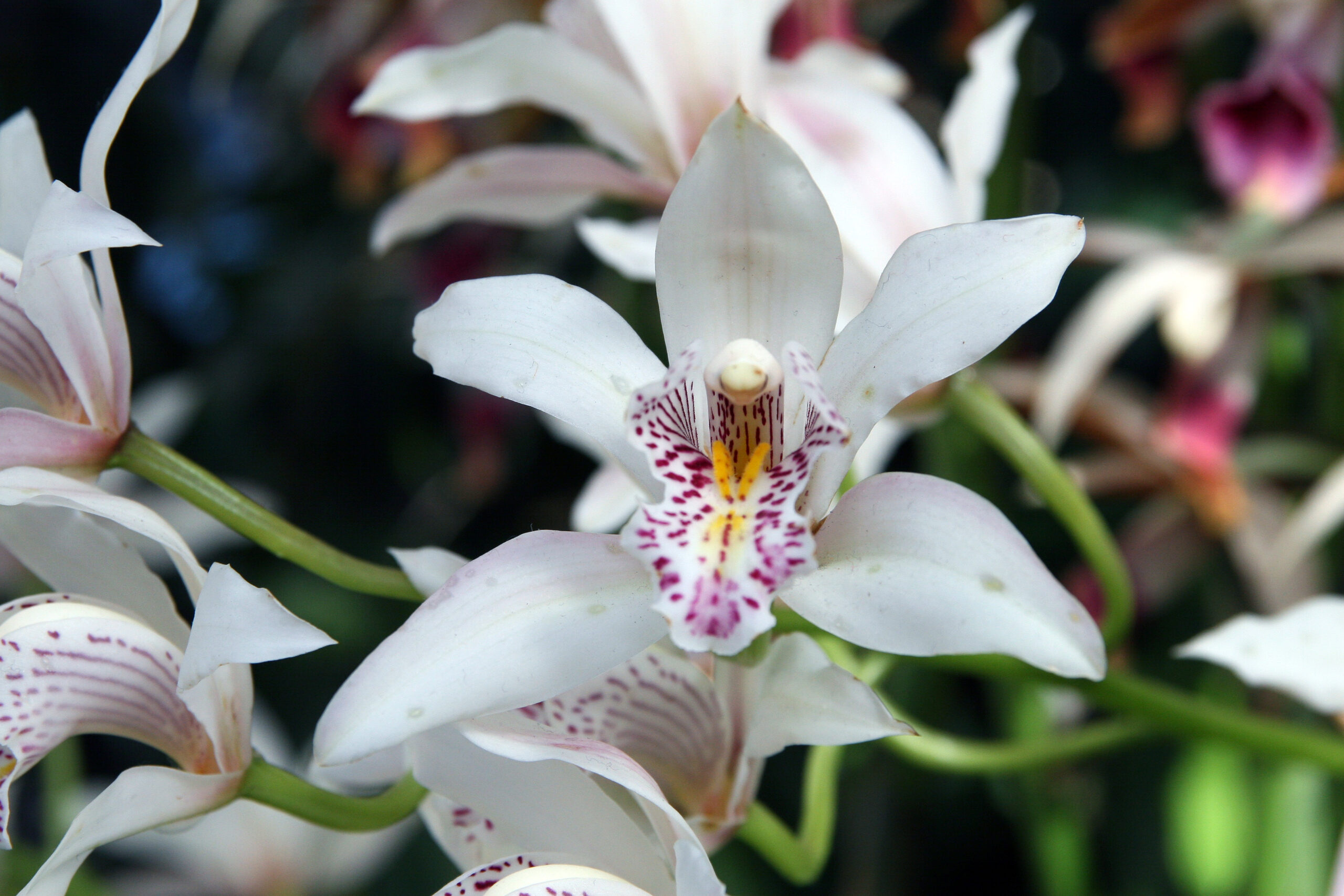When were the first Cymbidium plants brought from the Himalayas to England?

The first Cymbidium orchids were brought from the Himalayas to England in the mid-19th century. British botanist Sir Joseph Dalton Hooker collected Cymbidium species from the Himalayas between 1847 and 1851, which led to the development of hybrid Cymbidiums in Europe.
What is the origin of the name ‘Cymbidium’?

The name ‘Cymbidium’ is derived from the Greek word ‘kymbe’, meaning ‘boat’, referring to the boat-shaped lip or labellum of the Cymbidium flower.
Where can Cymbidium orchids still be found in the wild?
Cymbidium orchids are native to the forests of Asia and Australia, with most species originating from the Himalayas and Southeast Asia. They can still be found growing wild in these regions, particularly in the mountainous forests of countries like India, China, and Indonesia.
Native Region and Early Cultivation
- Cymbidium orchids are indigenous to the forests of Asia and Australia, with most species originating from the Himalayas and Southeast Asia.
- They were first cultivated in ancient China over 2,000 years ago, where they were highly valued for their beauty and fragrance. Confucius (551-479 BCE) praised them in his writings, referring to them as the “King of Fragrance”.
- In Chinese culture, Cymbidium orchids symbolize morality, virtue, beauty, refinement, and love. They are often given as gifts to show respect and admiration.
European Introduction and Hybridization
- British botanist Sir Joseph Dalton Hooker collected Cymbidium species from the Himalayas between 1847 and 1851, leading to the development of hybrid Cymbidiums in Europe.
- During the Victorian era, Cymbidiums became extremely popular in Europe, particularly among the upper class, who prized them for their exotic beauty and rarity.
- Hybridization of Cymbidiums took place in European chateau gardens, and later in California, Australia, and the Netherlands, resulting in a wide range of colors and varieties.
Modern Cultivation and Care
- Today, Cymbidiums are widely cultivated and enjoyed for their elegant flowers, which come in a variety of colors except blue.
- Cymbidiums are relatively easy to care for, requiring well-drained soil, moderate watering, and protection from extreme temperatures.
- To keep Cymbidiums healthy, it is essential to provide them with bright, indirect light, moderate watering, and regular fertilization. They should be repotted every two to three years to maintain their health and promote blooming.
Overall, the Cymbidium orchid has a long and storied history, from its origins in ancient China to its widespread cultivation and admiration today.
References:
– https://www.gardnermuseum.org/blog/orchid-habit-under-spell-cymbidium
– https://littleflowerhut.com.sg/flower-guide/all-about-cymbidium-orchid-history-meaning-facts-care-more/
– https://www.orchidsinfo.eu/en/the-orchid/cymbidium/
– https://www.aos.org/orchid-care/orchid-care-and-culture-sheets/cymbidium-culture-sheet/cymbidium-culture
– https://floralife.com/flowers/orchid-cymbidium/
